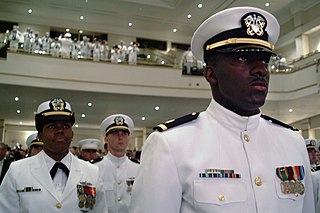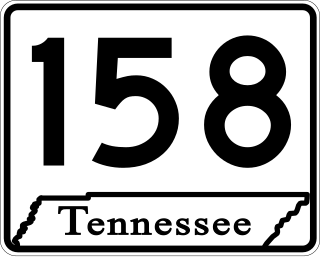
The Reserve Officers' Training Corps is a group of college- and university-based officer-training programs for training commissioned officers of the United States Armed Forces.

The Air Force Reserve Officers' Training Corps (AFROTC) is one of the three primary commissioning sources for officers in the United States Air Force and United States Space Force, the other two being the United States Air Force Academy (USAFA) and Air Force Officer Training School (OTS). A subordinate command of the Air University within the Air Education and Training Command (AETC), AFROTC is aligned under the Jeanne M. Holm Center for Officer Accessions and Citizen Development at Maxwell AFB, Alabama. The Holm Center, formerly known as the Air Force Officer Accession and Training Schools (AFOATS), retains direct responsibility for both AFROTC and OTS.

Lieutenant General Frank Maxwell Andrews was a senior officer of the United States Army and one of the founders of the United States Army Air Forces, which was later to become the United States Air Force. In leadership positions within the Army Air Corps, he succeeded in advancing progress toward a separate and independent Air Force where predecessors and allies such as Billy Mitchell had failed. Andrews was the first head of a centralized American air force and the first air officer to serve on the Army's general staff. In early 1943, he took the place of General Dwight D. Eisenhower as commander of all U.S. troops in the European Theater of Operations.

The Pride of the Southland Band is the marching band of the University of Tennessee in Knoxville, Tennessee. The band performs at all Tennessee home football games and some away games. The Pride of the Southland is recognized as one of the nation's top collegiate marching bands.

WVLT-TV is a television station in Knoxville, Tennessee, United States, affiliated with CBS and MyNetworkTV. It is owned by Gray Television alongside Crossville-licensed dual CW/Telemundo affiliate WBXX-TV. The two stations share studios on Papermill Drive on the west side of Knoxville; WVLT-TV's transmitter is located on Sharp's Ridge in North Knoxville.
WLJT-DT, branded West TN PBS, is a PBS member television station licensed to Lexington, Tennessee, United States, serving western and northwestern Tennessee. The station is owned by the West Tennessee Public Television Council and maintains studios in Martin on rented space at the University of Tennessee at Martin; its transmitter is located on U.S. Route 412 midway between Jackson and Lexington.
The 1938 Tennessee Volunteers football team represented the University of Tennessee in the 1938 college football season. Head coach Robert Neyland fielded his third team at Tennessee after returning from active duty in the United States Army. The 1938 Tennessee Volunteers won the school's first national championship and are regarded as one of the greatest teams in SEC and NCAA history. The team was named national champion by NCAA-designated major selectors of Berryman, Billingsley, Boand, Dunkel, College Football Researchers Association, Houlgate, Litkenhous, Poling, Sagarin, Sagarin (ELO-Chess)

State Route 158 (SR 158) is a major east–west state highway in the city of Knoxville in the U.S. state of Tennessee. It runs 4.63 miles (7.45 km) from Kingston Pike (US 11/US 70) along the Tennessee River to Interstate 40. The western portion of the highway is a surface street known as Neyland Drive and the eastern part is a controlled-access highway called James White Parkway. The entire highway serves as a bypass of downtown Knoxville and as a direct connector to the University of Tennessee (UT) campus and athletic facilities. Serving as the primary means of access to facilities such as Neyland Stadium and Thompson–Boling Arena, the route experiences congestion on game days, with a contraflow lane reversal implemented to mitigate this. It also serves as a spur into downtown and provides access to a number of local landmarks and historic sites, including the Blount Mansion and James White's Fort.

The 1992 Tennessee Volunteers football team represented the University of Tennessee in the 1992 NCAA Division I-A football season. The Volunteers were a member of the Southeastern Conference (SEC), in the Eastern Division and played their home games at Neyland Stadium in Knoxville, Tennessee. They finished the season with a record of nine wins and three and with a victory over Boston College in the Hall of Fame Bowl. The Volunteers offense scored 347 points while the defense allowed 196 points.
The 1928 Tennessee Volunteers football team represented the University of Tennessee in the 1928 Southern Conference football season. Playing as a member of the Southern Conference (SoCon), the team was led by head coach Robert Neyland, in his third year, and played their home games at Shields–Watkins Field in Knoxville, Tennessee. The 1928 Vols won nine, lost zero and tied one game. The only blemish on their schedule was a scoreless tie with Kentucky. Tennessee outscored their opponents 249 to 51 and posted five shutouts.
The 1929 Tennessee Volunteers football team represented the University of Tennessee in the 1929 college football season. Playing as a member of the Southern Conference (SoCon), the team was led by head coach Robert Neyland, in his fourth year, and played their home games at Shields–Watkins Field in Knoxville, Tennessee. The 1928 Vols won nine, lost zero and tied one game. In a virtual repeat of the previous year, a tie with Kentucky spoiled Tennessee's perfect season. Playing eight home games, the Volunteers outscored their opponents 330 to 13 and posted eight shutouts.
The 1931 Tennessee Volunteers football team represented the University of Tennessee in the 1931 Southern Conference football season. Playing as a member of the Southern Conference (SoCon), the team was led by head coach Robert Neyland, in his sixth year, and played their home games at Shields–Watkins Field in Knoxville, Tennessee. The 1931 Vols won nine, lost zero and tied one game. On October 17, Tennessee avenged their only loss from the previous season and beat Alabama; this was the only loss for the Crimson Tide in 1931. For the third time in four years, Kentucky spoiled Tennessee's bid for a perfect season with a tie. Tennessee concluded the 1931 season on December 7 with a charity game at Yankee Stadium against NYU. The 1931 Vols outscored their opponents 243 to 15 and posted eight shutouts.
WETP-TV and WKOP-TV, together branded as East Tennessee PBS, are public television stations serving Knoxville and the Tri-Cities in East Tennessee, United States. The stations are owned by the East Tennessee Public Communications Corporation and broadcast from studios and offices on East Magnolia Avenue in downtown Knoxville. WETP-TV, licensed to Sneedville, Tennessee, is broadcast from a transmitter atop Short Mountain near Mooresburg, while WKOP-TV's transmitter is situated on Sharp's Ridge in North Knoxville.
The 1973 Tennessee Volunteers football team represented the University of Tennessee in the 1973 NCAA Division I football season. Playing as a member of the Southeastern Conference (SEC), the team was led by head coach Bill Battle, in his fourth year, and played their home games at Neyland Stadium in Knoxville, Tennessee. They finished the season with a record of eight wins and four losses and a loss to Texas Tech in the 1973 Gator Bowl.
The 1970 Tennessee Volunteers football team represented the University of Tennessee in the 1970 NCAA University Division football season. Playing as a member of the Southeastern Conference (SEC), the team was led by head coach Bill Battle, in his first year, and played their home games at Neyland Stadium in Knoxville, Tennessee. They finished the season with a record of eleven wins and one loss and a victory over Air Force in the Sugar Bowl. The 1970 Tennessee defense holds the record for most takeaways in a single season with 57, not including the bowl game in which they recorded 8 more.
The 1942 Tennessee Volunteers represented the University of Tennessee in the 1942 college football season. Playing as a member of the Southeastern Conference (SEC), the team was led by head coach John Barnhill, in his second year, and played their home games at Shields–Watkins Field in Knoxville, Tennessee. They finished the season with a record of nine wins, one loss and one tie, and concluded the season with a victory against Tulsa in the 1943 Sugar Bowl.
The 1978 Chattanooga Moccasins football team represented the University of Tennessee at Chattanooga in the 1978 NCAA Division I-A football season. The Moccasins were led by first-year head coach Joe Morrison and played their home games at Charmerlain Field. They finished the season 7–3–1 overall and 3–1 in Southern Conference (SoCon) play to finish tied for first place.
WEMG was a radio station in Knoxville, Tennessee, United States, broadcasting on 1430 kHz AM. Last owned by Word of Faith Fellowship, it broadcast from 1960 to 1988 or 1989. For most of its time on air, it was the only Black-oriented station in East Tennessee, including a decade of ownership by singer James Brown.







